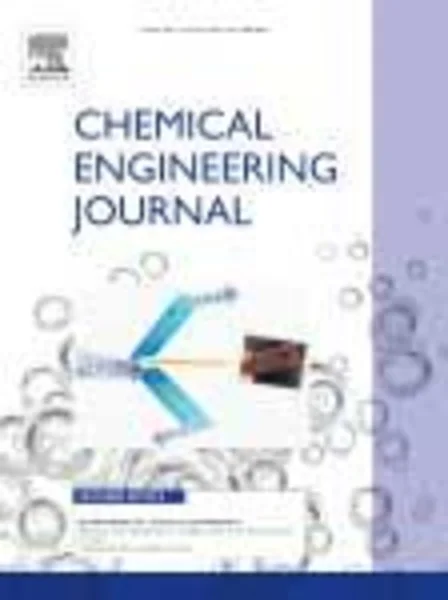-
aerobic sludge granulation facilitated by activated carbon for partial nitrification treatment of ammonia-rich wastewater
جزئیات بیشتر مقاله- تاریخ ارائه: 1392/01/01
- تاریخ انتشار در تی پی بین: 1392/01/01
- تعداد بازدید: 607
- تعداد پرسش و پاسخ ها: 0
- شماره تماس دبیرخانه رویداد: -
although the use of partial nitrification, or nitritation, for nitrogen removal via nitrite is an energy-saving method for treating high-strength ammonia wastewater, its stable operation with sufficient enrichment of ammonia-oxidizing bacteria (aob) is difficult to maintain in activated sludge systems. in this study, an aerobic granulation technique was developed for the effective and stable nitritation treatment of ammonia-rich inorganic influent. granular activated carbon (gac) or powdered activated carbon (pac) was added to the bioreactor to enhance the granulation of slow-growing aob. the results show that aerobic granules could be formed for partial nitrification through the selective discharge of small and slow-settling sludge flocs, with or without activated carbon addition. however, dosing gac into the sludge greatly accelerated the granulation process and shortened the granulation period from about 6 weeks to less than 3 weeks with the formation of large and fast-settling granules. in contrast, dosing pac led to the slower formation of smaller granules. compared to activated sludge flocs, sludge granulation with selective sludge discharge was found to help halt ammonia oxidation to the level of partial nitrification rather than complete nitrification. based on the molecular analysis, aerobic granulation resulted in aob enrichment and the reduction of nitrite-oxidizing bacteria (nob) in granules, which is highly favorable to a stable partial nitrification operation.
مقالات جدیدترین رویدادها
-
استفاده از تحلیل اهمیت-عملکرد در ارائه الگوی مدیریت خلاقیت سازمانی و ارائه راهکار جهت بهبود
-
بررسی تاثیر ارزش وجوه نقد مازاد بر ساختار سرمایه شرکت های پذیرفته شده در بورس اوراق بهادار تهران
-
بررسی تأثیر سطح افشای ریسک بر قرارداد بدهی شرکت های پذیرفته شده در بورس اوراق بهادار تهران
-
بررسی تأثیر رتبه بندی اعتباری مبتنی بر مدل امتیاز بازار نوظهور بر نقد شوندگی سهام با تأکید بر خصوصی سازی شرکت ها
-
تأثیر آمیخته بازاریابی پوشاک ایرانی بر تصویر ذهنی مشتری پوشاک ایرانی (هاکوپیان)
-
مقایسه دو سیستم خطوط وسائل نقلیه با ظرفیت بالا h.o.v برگشت پذیر و هم جهت در بزرگراه ها- مطالعه موردی بزرگراه شهید همت تهران
-
بررسی اثر وجود و یا عدم وجود ساختار بر روی رفتار تراکم پذیری خاک های سیمانی شده مصنوعی با توجه به افزایش درصد متفاوت سیمان
-
نقش و جایگاه خلاقیت در طراحی فضاهای عمومی مورد مطالعه: بوستان آب و آتش
-
electrophoresis of a spherical particle in a spherical cavity
-
on the effect of turbulent intensity towards the accuracy of the zero-equation turbulence model for indoor airflow application
مقالات جدیدترین ژورنال ها
-
مدیریت و بررسی افسردگی دانش آموزان دختر مقطع متوسطه دوم در دروان کرونا در شهرستان دزفول
-
مدیریت و بررسی خرد سیاسی در اندیشه ی فردوسی در ادب ایران
-
واکاوی و مدیریت توصیفی قلمدان(جاکلیدی)ضریح در موزه آستان قدس رضوی
-
بررسی تاثیر خلاقیت، دانش و انگیزه کارکنان بر پیشنهادات نوآورانه کارکنان ( مورد مطالعه: هتل های 3 و 4 ستاره استان کرمان)
-
بررسی تاثیر کیفیت سیستم های اطلاعاتی بر تصمیم گیری موفق در شرکتهای تولیدی استان اصفهان (مورد مطالعه: مدیران شرکتهای تولیدی استان اصفهان)
-
امکان سنجی بلاک چین در برنامه ریزی و مدیریت پروژه
-
نقش شخصیت بزهکار و روش برخورد تربیتی درخور با شخصیت مجرم از دیدگاه آموزه های اسلام
-
فرازمندی دیوان سالاری در تمدن اسلامی و نقش دبیران ایرانی (با تاکید بر قرون نخست هجری)
-
بررسی تاثیر فرهنگ معنوی بر مسئولیت اجتماعی با نقش میانجی سرمایه اجتماعی کارکنان درمان بیمارستان های دولتی شهر تهران
-
نقش ادراک کارکنان از حمایت سازمانی در توسعه نوآوری سازمانی- مطالعه موردی: شعب بانک سپه استان فارس




سوال خود را در مورد این مقاله مطرح نمایید :